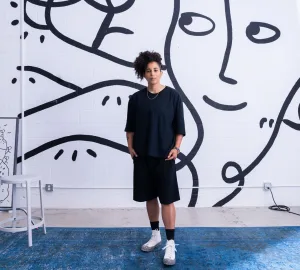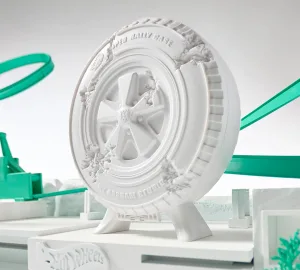6 minute read
Fine art photography can include portraits, landscapes, and other types of photography. So, what defines them from others? The purpose of art is to create an artist’s vision of an event, concept, or condition. Photography is another way for the creator to express his ideas and show them to the audience. Art photography puts a priority on the art of the subject, which is something that inspired you to capture that moment. That’s why when you look at this type of photo, the first thing you should notice is not the image of the subject but the photographer’s vision. Learn more about the intricacies of fine art photography in this article.
Distinctive features of artistic photography
Photos in the same way as paintings can differ in style and direction. Photography is a more modern version of the art canvas, and while some favor the classics, some artists use the camera lens to create. Art photography, for example, conveys the artist’s emotion or idea. To make it easier for others to understand the author’s idea, they even briefly explain what triggered the photo.
Photography has a big room for artists to experiment, using all kinds of methods to communicate their perspectives. You can look at the best examples of artistic photos at africa-images.com; perhaps some of the images can serve as inspiration to you if you are interested in this genre of photography.
Genres of Art Photography
Art photography overlaps with many other genres, as the artist can convey their intent through an object of any kind or origin. Virtually everything plays a role in this type of photo:
- Light;
- Focus;
- Color palette;
- Material;
- Place, etc.
Where can you try your hand at artistic photography? The choice remains great: landscapes, portraits, still lifes, abstract images, and more. Below you can get to know each of these and other genres in more detail.
Landscape Photography
Landscapes are often referred to as fine art. Through them, artists can convey many different messages, as nature is a great symbol to convey emotions, states, events, etc.
Portrait Photography
Portraits are another great example of fine art photos, but not all portraits can be classified as fine art. For example, passport photos or any portrait photo to order would not be classified in this way. At the same time, portraits can hide behind an external shell some true meaning if you think out your idea well. People love to look at other people, so portraits are a great way to convey the experience of the human state.
Still Life Photography
A still life is a composition of any inanimate objects. We can find countless examples of this from the past, but today still life can also be a way to portray something unusual. By presenting something simple, you can make people look at these objects from a different angle. For example, food photography can turn out to be a real work of art, as it is now gaining a lot of demand. Just show a little creativity.
Conceptual Photography
The purpose of conceptual photography is to portray a concept through physical materials. When creating it, the main principle is to create a precise arrangement of situations to emphasize their meaning.
You can realize your artistic idea in almost any genre of photography. For the photo to turn out as well as possible, it should not be devoid of aesthetic appeal and proper processing. The artist must think “deeper” to transfer his idea to the photo.
How do you create a fine art photograph?
Art photography doesn’t happen in a moment of inspiration, although it is an integral part of any art. Above all, it is planning and perfection, as you must think well about the meaning of your idea and how to send it. For an artist to get noticed, he must think outside the box and not rely on clichés, but he still needs to follow some generally accepted steps. You can start with the following:
- Mark the topics you’re passionate about so you can choose which direction to go in;
- Consider what message you’d like to convey through the photograph;
- Identify the priorities in your photo;
- Think about the techniques you will use;
- Don’t be afraid to experiment; do it more often so you don’t lose your inspiration;
- Focus on creating your vision. They say an artist exposes their soul in their work, and their work can relate to their personal experience. This will add individual style and sincerity to your work;
- Search for inspiration from the outside. It will not be a crime to observe other art photographers’ work, yet make sure that you do not completely adopt their style.
The main thing to remember is that there is no perfect in art photography, so you shouldn’t get hung up on achieving it.
Tips for the aspiring art photographer
If you are interested in the topic of art photography, then you can use the following tips to get an easy start in your endeavors:
Learn your tools
As a professional, you have to know your tools to use them correctly to achieve the best effect. You must understand how the camera works and test different modes and settings. Study depth of field, shutter speed, and other intricacies of your tool to better communicate your vision.
Change your perspective
Mix up the ways you create photos to find a new perspective. See the ordinary things around you from a different angle. Experiment with colors, visuals, etc.
-Work on your composition skills.
Learn the rules of composition so you can break them later. It sounds absurd, but it’s the only way to convey your ideas better. Something wrong and unconventional also draws the audience’s attention.
Focus on your interests
An artist has more success when the subject matter to which he dedicates his work interests him. Only you can decide which goals to pursue and how to express them.
Demand for art photography
Art photography prices weren’t very high in the past, but over time, the art market has taken a larger turn, as there are now more ways to promote your art. Art is now playing a big role in people’s lives, and everyone wouldn’t mind decorating their home with an unusual photo that would resonate with them.
Conclusion
Artists must have their own vision and ideas to work in art photography. If you have found something you are interested in, you will be able to implement the idea in any genre of photography.





